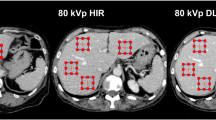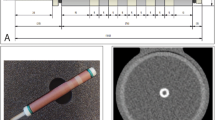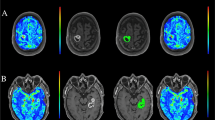Abstract
Purpose
To externally validate the performance of automated postprocessing (AP) on head and neck CT Angiography (CTA) and compare it with manual postprocessing (MP).
Methods
This retrospective study included head and neck CTA-exams of patients from three tertiary hospitals acquired on CT scanners from five manufacturers. AP was performed by CerebralDoc. The image quality was assessed using Likert scales, and the qualitative and quantitative diagnostic performance of arterial stenosis and aneurysm, postprocessing time, and scanning radiation dose were also evaluated.
Results
A total of 250 patients were included. Among these, 55 patients exhibited significant stenosis (≥ 50%), and 33 patients had aneurysms, diagnosed using original CTA datasets and corresponding multiplanar reconstructions as the reference. While the scores of the V4 segment and the edge of the M1 segment on volume rendering (VR), as well as the C4 segment on maximum intensity projection (MIP), were significantly lower with AP compared to MP across vendors (all P < 0.05), most scores in AP demonstrated image quality that was either superior to or comparable with that of MP. Furthermore, the diagnostic performance of AP was either superior to or comparable with that of MP. Moreover, AP also exhibited advantages in terms of postprocessing time and radiation dose when compared to MP (P < 0.001).
Conclusion
The AP of CerebralDoc presents clear advantages over MP and holds significant clinical value. However, further optimization is required in the image quality of the V4 and M1 segments on VR as well as the C4 segment on MIP.






Similar content being viewed by others
References
Powers WJ, Rabinstein AA, Ackerson T et al (2019) Guidelines for the Early Management of Patients With Acute Ischemic Stroke: 2019 Update to the 2018 Guidelines for the Early Management of Acute Ischemic Stroke: A Guideline for Healthcare Professionals From the American Heart Association/American Stroke Association. Stroke 50:e344–e418
Thompson BG, Brown RD, Amin-Hanjani S et al (2015) Guidelines for the Management of Patients With Unruptured Intracranial Aneurysms. Stroke 46:2368–2400
Wu S, Wu B, Liu M et al (2019) Stroke in China: advances and challenges in epidemiology, prevention, and management. The Lancet Neurology 18:394–405
Zhang L-J, Wu S-Y, Poon CS et al (2010) Automatic Bone Removal Dual-Energy CT Angiography for the Evaluation of Intracranial Aneurysms. J Comput Assist Tomogr 34:816–824
Saba L, Sanfilippo R, Montisci R, Mallarini G (2010) Assessment of Intracranial Arterial Stenosis with Multidetector Row CT Angiography: A Postprocessing Techniques Comparison. Am J Neuroradiol 31:874–879
Kaemmerer N, Brand M, Hammon M et al (2016) Dual-Energy Computed Tomography Angiography of the Head and Neck With Single-Source Computed Tomography. Invest Radiol 51:618–623
Lell MM, Ditt H, Panknin C et al (2008) Cervical CT Angiography Comparing Routine Noncontrast and a Late Venous Scan as Masks for Automated Bone Subtraction. Invest Radiol 43:27–32
Li Q, Lv F, Wei Y, Luo T, Xie P (2013) Automated Subtraction CT Angiography for Visualization of the Whole Brain Vasculature. Acad Radiol 20:1009–1014
Fu F, Wei J, Zhang M et al (2020) Rapid vessel segmentation and reconstruction of head and neck angiograms using 3D convolutional neural network. Nat Commun 11:4829
Lell MM, Ruehm SG, Kramer M et al (2009) Cranial Computed Tomography Angiography With Automated Bone Subtraction. Invest Radiol 44:38–43
Fu F, Shan Y, Yang G et al (2023) Deep Learning for Head and Neck CT Angiography: Stenosis and Plaque Classification. Radiology 307:220996
Sheth SA, Giancardo L, Colasurdo M, Srinivasan VM, Niktabe A, Kan P (2023) Machine learning and acute stroke imaging. Journal of NeuroInterventional Surgery 15:195–199
Li M, Ling R, Yu L et al (2023) Deep Learning Segmentation and Reconstruction for CT of Chronic Total Coronary Occlusion. Radiology 306:e221393
Xing H, Zhang X, Nie Y et al (2022) A deep learning-based post-processing method for automated pulmonary lobe and airway trees segmentation using chest CT images in PET/CT. Quant Imaging Med Surg 12:4747–4757
van der Ven JPG, van Genuchten W, Sadighy Z et al (2022) Multivendor Evaluation of Automated MRI Postprocessing of Biventricular Size and Function for Children With and Without Congenital Heart Defects. J Magn Reson Imaging 58:794–804
Pain CD, Egan GF, Chen Z (2022) Deep learning-based image reconstruction and post-processing methods in positron emission tomography for low-dose imaging and resolution enhancement. Eur J Nucl Med Mol Imaging 49:3098–3118
Luo N, He Y, Fan J et al (2022) Performance evaluation of deep learning-based post-processing and diagnostic reporting system for coronary CT angiography: a clinical comparative study. Chin Med J 135:2366–2368
Corrado PA, Wentland AL, Starekova J, Dhyani A, Goss KN, Wieben O (2022) Fully automated intracardiac 4D flow MRI post-processing using deep learning for biventricular segmentation. Eur Radiol 32:5669–5678
Ferreira PF, Martin RR, Scott AD et al (2020) Automating in vivo cardiac diffusion tensor postprocessing with deep learning–based segmentation. Magn Reson Med 84:2801–2814
Ekert K, Kloth C, Fritz J, Ioanoviciu SD, Horger M (2020) Improved Detection of Benign and Malignant Rib Lesions in the Routine Computed Tomography Workup of Oncological Patients Using Automated Unfolded Rib Image Postprocessing. Invest Radiol 55:84–90
Shi Z, Zhao X, Zhu S et al (2023) Time-of-Flight Intracranial MRA at 3 T versus 5 T versus 7 T: Visualization of Distal Small Cerebral Arteries. Radiology 306:207–217
Greve T, Sollmann N, Hock A, Zimmer C, Kirschke JS (2020) Novel Ultrafast Spiral Head MR Angiography Compared to Standard MR and CT Angiography. J Neuroimaging 31:45–56
Greve T, Sollmann N, Hock A et al (2019) Highly accelerated time-of-flight magnetic resonance angiography using spiral imaging improves conspicuity of intracranial arterial branches while reducing scan time. Eur Radiol 30:855–865
Lell MM, Kramer M, Klotz E, Villablanca P, Ruehm SG (2009) Carotid Computed Tomography Angiography With Automated Bone Suppression. Invest Radiol 44:322–328
Slieker RC, van der Heijden AAWA, Siddiqui MK et al (2021) Performance of prediction models for nephropathy in people with type 2 diabetes: systematic review and external validation study. BMJ 374:n2134
Mair G, White P, Bath PM et al (2022) External Validation of e-ASPECTS Software for Interpreting Brain CT in Stroke. Ann Neurol 92:943–957
de Jong VMT, Rousset RZ, Antonio-Villa NE et al (2022) Clinical prediction models for mortality in patients with covid-19: external validation and individual participant data meta-analysis. BMJ 378:e069881
Yang Y, Huan X, Guo D, Wang X, Niu S, Li K (2023) Performance of deep learning-based autodetection of arterial stenosis on head and neck CT angiography: an independent external validation study. Radiol Med (Torino) 128:1103–1115
Bajaj S, Khunte M, Moily NS et al (2023) Value Proposition of FDA-Approved Artificial Intelligence Algorithms for Neuroimaging. J Am Coll Radiol. https://doi.org/10.1016/j.jacr.2023.06.034
Yang W, Chen C, Yang Y et al (2023) Diagnostic performance of deep learning-based vessel extraction and stenosis detection on coronary computed tomography angiography for coronary artery disease: a multi-reader multi-case study. Radiol Med 128:307–315
Saver JL, Chapot R, Agid R et al (2020) Thrombectomy for Distal, Medium Vessel Occlusions. Stroke 51:2872–2884
Boos J, Fang J, Heidinger BH, Raptopoulos V, Brook OR (2016) Dual energy CT angiography: pros and cons of dual-energy metal artifact reduction algorithm in patients after endovascular aortic repair. Abdom Radiol 42:749–758
Neyazi B, Swiatek VM, Skalej M et al (2020) Rupture risk assessment for multiple intracranial aneurysms: why there is no need for dozens of clinical, morphological and hemodynamic parameters. Ther Adv Neurol Disord 13:1756286420966159
Malhotra A, Wu X, Forman HP, Matouk CC, Gandhi D, Sanelli P (2018) Management of Tiny Unruptured Intracranial Aneurysms. JAMA Neurol 75:27–34
Taki W (2011) Factors predicting retreatment and residual aneurysms at 1 year after endovascular coiling for ruptured cerebral aneurysms: Prospective Registry of Subarachnoid Aneurysms Treatment (PRESAT) in Japan. Neuroradiology 54:597–606
Yan C, Yu F, Zhang Y et al (2023) Multidelay Arterial Spin Labeling Versus Computed Tomography Perfusion in Penumbra Volume of Acute Ischemic Stroke. Stroke 54:1037–1045
Amukotuwa SA, Wu A, Zhou K, Page I, Brotchie P, Bammer R (2021) Distal Medium Vessel Occlusions Can Be Accurately and Rapidly Detected Using Tmax Maps. Stroke 52:3308–3317
Brown RD, Broderick JP (2014) Unruptured intracranial aneurysms: epidemiology, natural history, management options, and familial screening. The Lancet Neurology 13:393–404
Nam J-S, Jeon S-B, Jo J-Y et al (2019) Perioperative rupture risk of unruptured intracranial aneurysms in cardiovascular surgery. Brain 142:1408–1415
Yan Z, Yang X, Cheng K-T (2019) A Three-Stage Deep Learning Model for Accurate Retinal Vessel Segmentation. IEEE J Biomed Health Inform 23:1427–1436
Lell MM, Hinkmann F, Nkenke E et al (2010) Dual energy CTA of the supraaortic arteries: Technical improvements with a novel dual source CT system. Eur J Radiol 76:e6–e12
Deng K, Liu C, Ma R et al (2009) Clinical evaluation of dual-energy bone removal in CT angiography of the head and neck: comparison with conventional bone-subtraction CT angiography. Clin Radiol 64:534–541
Fabijańska A (2018) Segmentation of corneal endothelium images using a U-Net-based convolutional neural network. Artif Intell Med 88:1–13
Nguyen-Huynh MN, Wintermark M, English J et al (2008) How Accurate Is CT Angiography in Evaluating Intracranial Atherosclerotic Disease? Stroke 39:1184–1188
Huang J, Degnan AJ, Liu Q et al (2012) Comparison of NASCET and WASID criteria for the measurement of intracranial stenosis using digital subtraction and computed tomography angiography of the middle cerebral artery. J Neuroradiol 39:342–345
Westerlaan HE, van Dijk JMC, Jansen-van der Weide MC et al (2011) Intracranial Aneurysms in Patients with Subarachnoid Hemorrhage: CT Angiography as a Primary Examination Tool for Diagnosis—Systematic Review and Meta-Analysis. Radiology 258:134–145
Mannil M, Ramachandran J, Vittoria de Martini I et al (2017) Modified Dual-Energy Algorithm for Calcified Plaque Removal. Invest Radiol 52:680–685
Acknowledgements
We extend our appreciation for the support offered by the postprocessing engineers during the standardization training phase of image postprocessing.
Funding
This work was supported by Discipline Construction Project Kuanren Plateau.
Author information
Authors and Affiliations
Corresponding author
Additional information
Publisher's Note
Springer Nature remains neutral with regard to jurisdictional claims in published maps and institutional affiliations.
Supplementary Information
Below is the link to the electronic supplementary material.
Rights and permissions
Springer Nature or its licensor (e.g. a society or other partner) holds exclusive rights to this article under a publishing agreement with the author(s) or other rightsholder(s); author self-archiving of the accepted manuscript version of this article is solely governed by the terms of such publishing agreement and applicable law.
About this article
Cite this article
Li, K., Yang, Y., Niu, S. et al. A Comparative Study of AI-Based Automated and Manual Postprocessing of Head and Neck CT Angiography: An Independent External Validation with Multi-Vendor and Multi-Center Data. Neuroradiology (2024). https://doi.org/10.1007/s00234-024-03379-y
Received:
Accepted:
Published:
DOI: https://doi.org/10.1007/s00234-024-03379-y




